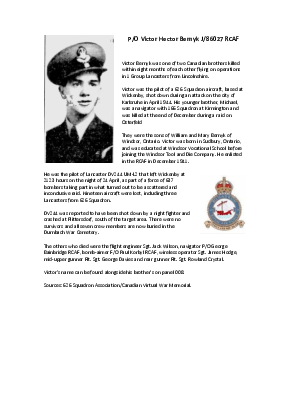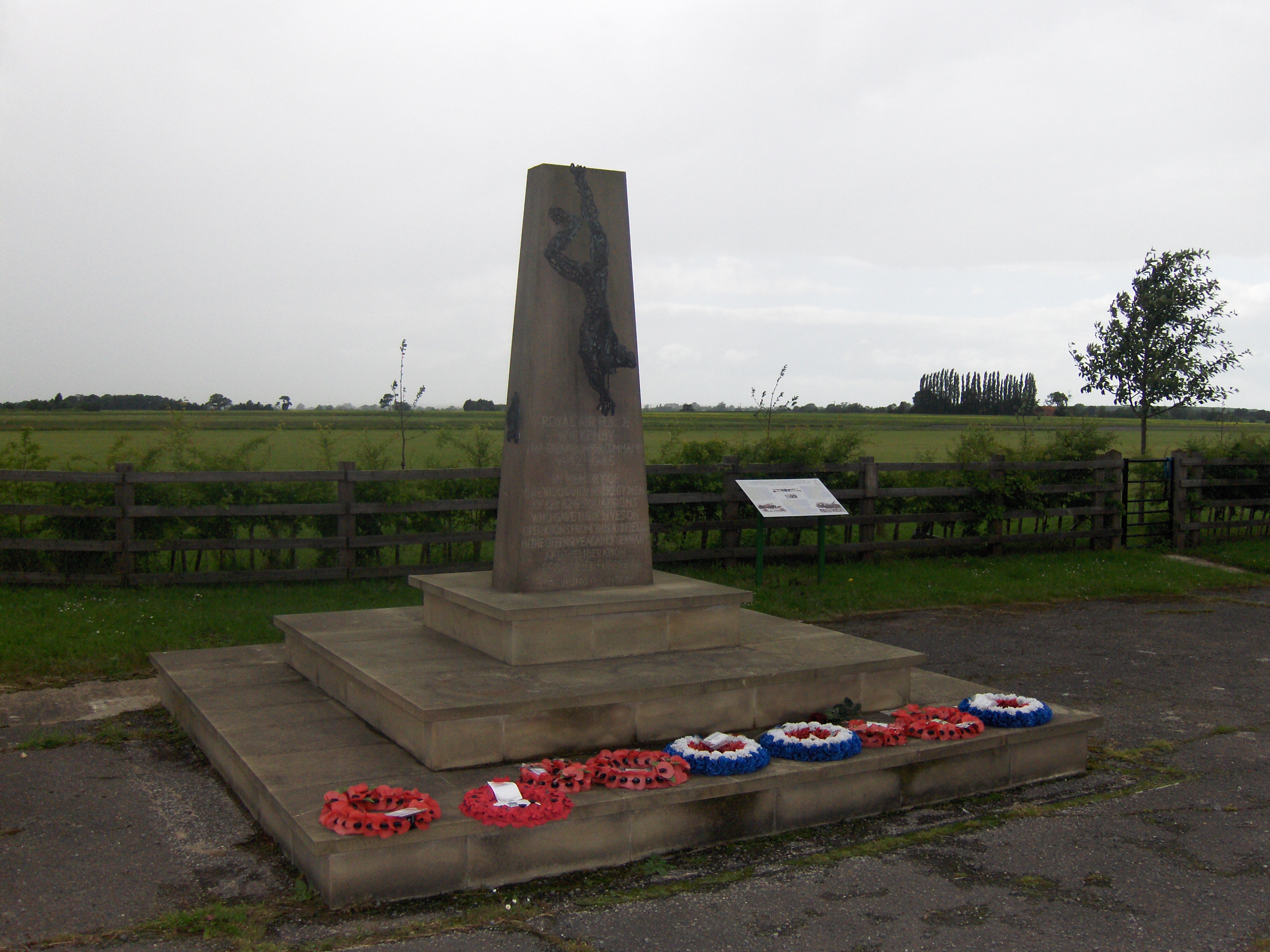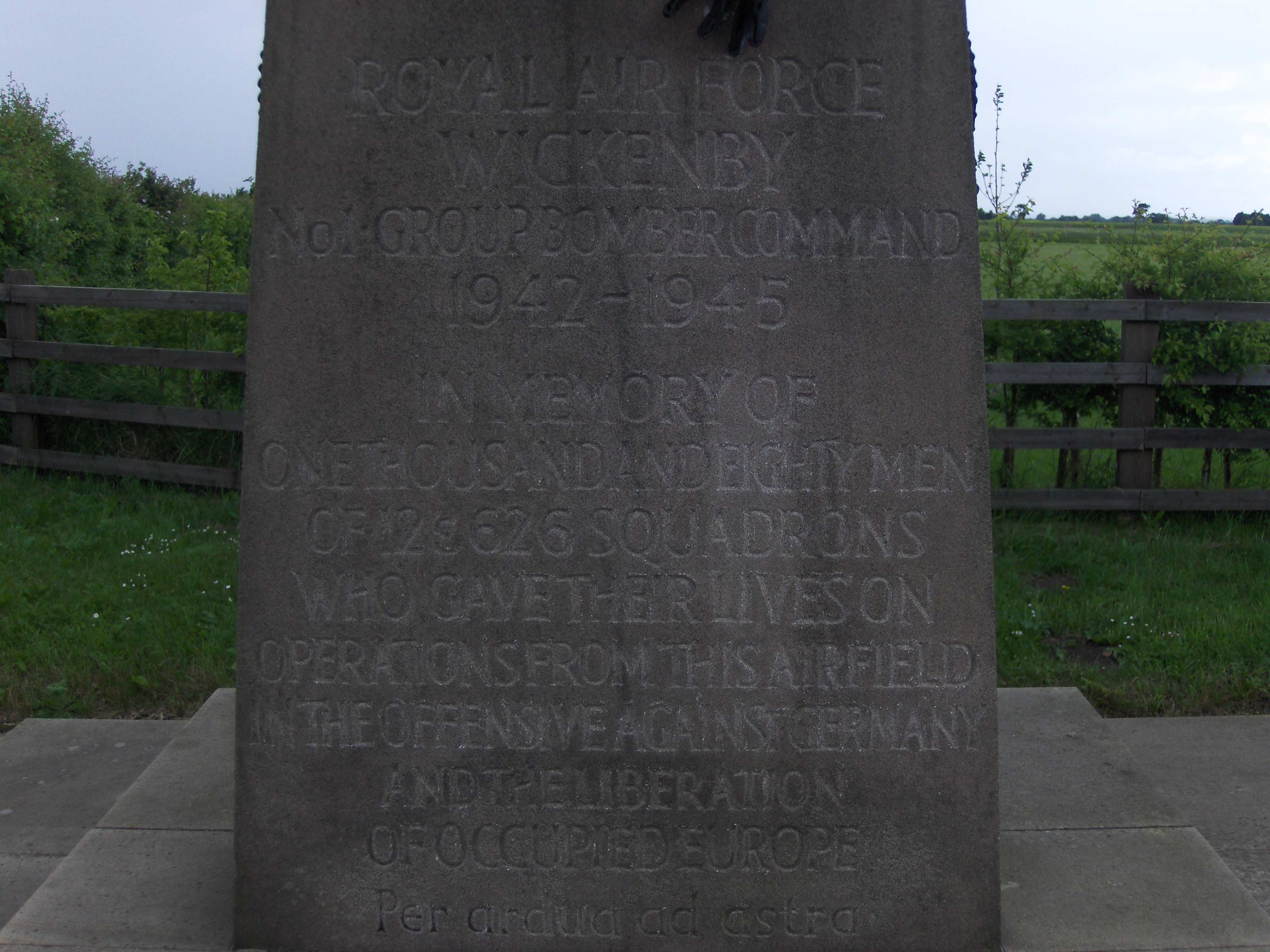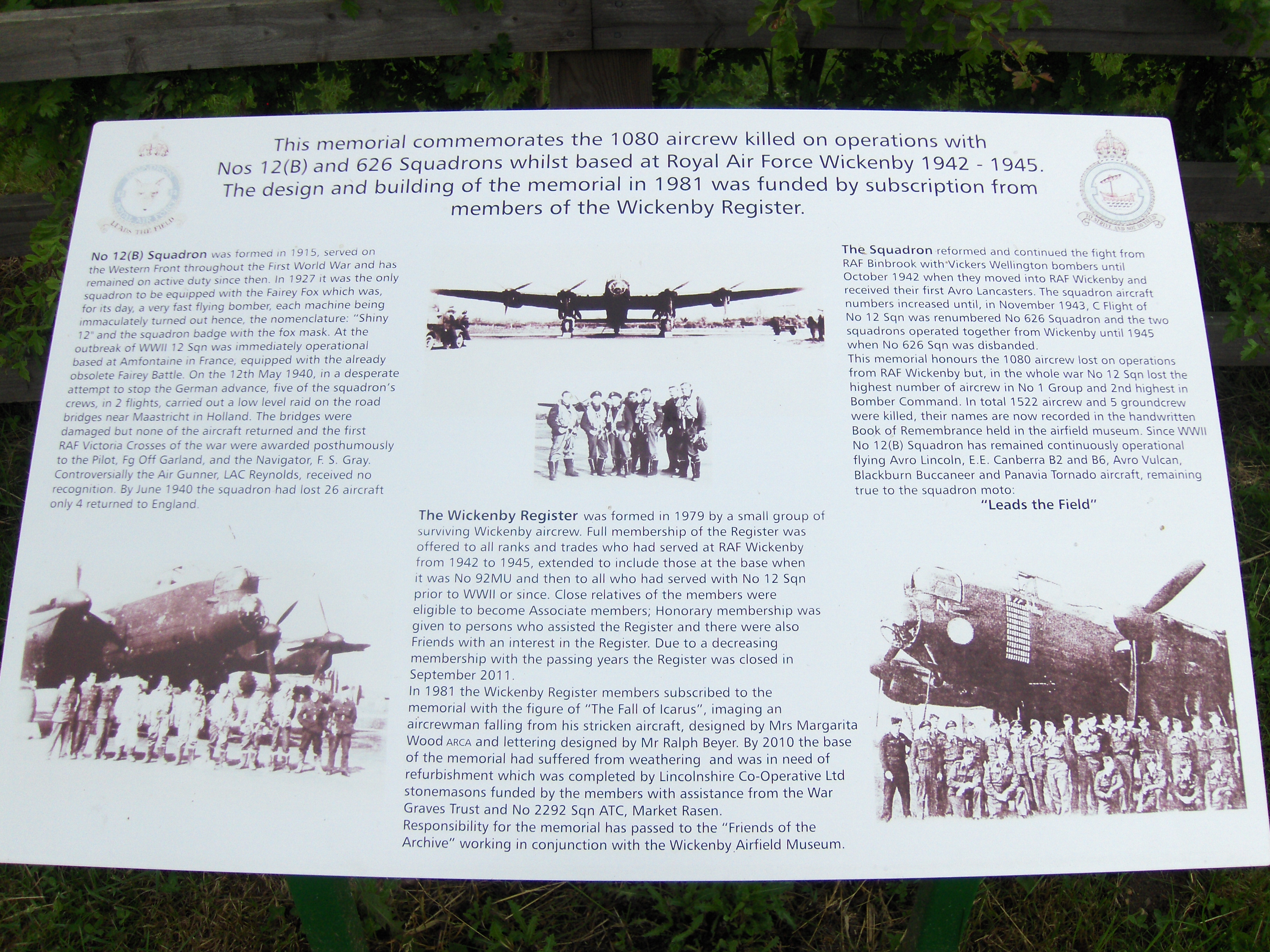Bernyk, Victor Hector
Personal Information
| Rank | P/O |
| Forename(s) | Victor Hector |
| Surname | Bernyk |
| Gender | M |
| Age | 21 |
| Date of Death | 25-04-1944 |
| Next of Kin | Son of Wasyl (William) Bernyk and Mary Bernyk (née Popovetzki), of Windsor, Ontario, Canada. |
Aircraft Information
| Aircraft | Avro Lancaster III |
| Serial Number | DV244 |
| Markings | UM-L2 |
Memorial Information
| Burial/Memorial Country | Germany |
| Burial/Memorial Place | Durnbach War Cemetery |
| Grave Reference | Coll. grave 3. H. 21-25. |
| Epitaph |
IBCC Memorial Information
| Phase | 1 |
| Panel Number | 8 |
Enlistment Information
| Service Number | J/86027 |
| Service | Royal Canadian Air Force |
| Group | 1 |
| Squadron | 626 |
| Squadron Motto | To strive and not to yield |
| Trade | Pilot |
| Country of Origin | Canada |
Other Memorials
| Location | Main Entrance, Wickenby Airfield, Lincolnshire |
| Country | United Kingdom |
| Memorial Type | Inscribed Memorial Stone, Metal Scupture, Info Board |
| Memorial Text | This memorial commemorates the 1080 aircrew killed on operations with Nos (12B) and 626 squadrons whilst based at Royal Air Force Wickenby 1942-1945, the design and building of the memorial in 1981 was funded by subscription from members of the Wickenby R |
Miscellaneous Information
| Victor was born on 14 May 1922 at Sellwood, Ontario. His father worked as a labourer and both parents were born in Bukovina, Romania. He was one of ten children having sisters Stella, Mary, Anne and Helen and brothers William, John and Dan, the latter shown as Private Dan Bernyk. Another sister Emma had died in 1941 and brother F/O Michael Bernyk J/38740, had died on 31 December 1944. 21 year old Michael was born on 24 August 1923 at Windsor and was a navigator with 166 Squadron. He had enlisted on 6 July 1942. Victor went to Gordon McGregor Public school in Windsor, 1928-1936. He then attended Windsor -Walkerville Vocational High, 1936-1940 (Technical), including two months Government training in machine shop in 1940. His sport interests were swimming, football, basketball and baseball and his hobby was building model aeroplanes. Victor worked as a machinist at Windsor Truing Tool, in Windsor ( 1940-1941) before enlisting on 2 December 1941. |
| After enlistment and early training he embarked from New York on 9 March 1943, arriving in the U.K. at 3PRC on 18 March. He then went to 15(P) AFU on 17 May 1943, 81 OTU 20 July 1943, 1662 CU 17 October 1943 and 626 Squadron on 10 February 1944. Sadly Victor was to lose his life on 25 April 1944 |
Commonwealth War Graves Commission
The National Archives
| Record of Events (Operational Record Book) AIR 27/2145/12 |
| Summary of Events (Operational Record Book) AIR 27/2145/11 |
Fellow Servicemen
Please note that this list gives all the losses aboard the quoted aircraft and occasionally these may have occurred on an earlier date when the aircraft was not itself lost. Please check the dates of death carefully.
Last Operation Information
| Start Date | 24-04-1944 |
| End Date | 25-04-1944 |
| Takeoff Station | Wickenby |
| Day/Night Raid | Night (6% moon) |
| Operation | Karlsruhe |
| Reason for Loss | Shot down by a night-fighter and crashed at Plittersdorf, 6km NW of Rastatt. |





